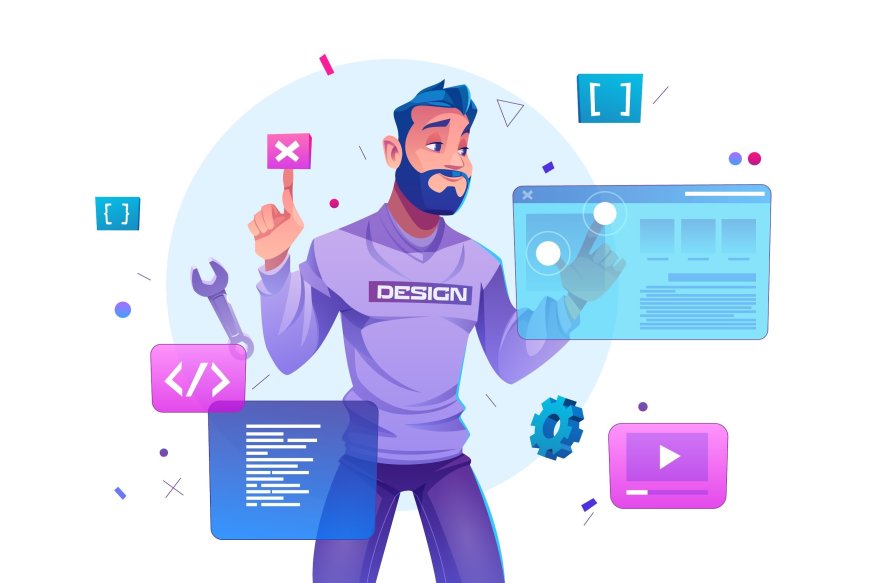You’re scrolling around reading about the latest web design trends, but you’ve found that there are a lot of them. You only want to focus on the trends that are relevant to small businesses.
Well, in this article, I’ll provide you with five of the most crucial web design trends that small businesses should know about in 2021.
Let’s get started.
1. Responsive Design
Having a responsive website is not just a 2021 web design trend but has been a trend ever since mobile users outgrew desktop users in 2018 by 58%. Thus you need always make sure that your site is optimized for different types of devices like desktop, mobile, and tablet devices.
Visitors won’t stick around your website if it provides a disappointing experience. These could be like slow-loading pages, cluttered pages, or just unaesthetic web design. Here are some statistics to look at:
- 83% of visitors expect your site to load within three seconds.
- 94% of first impressions are related to your web design.
- 73% of companies invest heavily in web design.
It’s not just about the bounce rate, but having an unresponsive site will also affect your search engine rankings because Google and other search engines are less likely to place your site high on the ranks if it’s not responsive.
There are a couple of ways you can create a responsive website on various platforms. One is by creating an entirely separate version of your website for desktop, mobile, and tablet. The other one is by using a website builder from a web hosting provider.
The latter is a relatively more straightforward method because you only need to create one web design. The website builder will usually automatically optimize it for other devices. But you can always look at it and modify the layout yourself for the best results.
2. Mobile-First Approach
As mentioned above, mobile users have overtaken desktop users and are still growing. The fact that 74% of visitors are more likely to come back to mobile-friendly sites means that you need to prioritize creating sites that work great on mobile devices.
Here are some more statistics for the effectiveness of optimizing for mobile devices:
- 70% of mobile searches lead to action.
- 70% of web traffic comes from mobile devices.
- On average, people spend approximately five hours a day on their mobile devices.
Not only that, but Google also made mobile-friendliness a ranking factor. This means that any website that isn’t optimized for mobile devices won’t rank high in search engine results pages (SERPs).
So, to get aboard this trend, you’ll need to prioritize optimizing your mobile site first before your desktop site. Try making your mobile site “thumb-friendly.” This means placing key elements where the thumbs land naturally on their mobile devices.
You can use tools like Google’s Mobile-Friendly Test to check. If your site isn’t mobile-friendly, the tool will give you a list of what you need to optimize on.
3. AI Chatbots
You might’ve noticed that many business sites these days will have a small pop-up window on the bottom right corner of the screen when you first arrive on the site. It will usually greet you and ask whether it can provide you with any assistance. That’s a chatbot.
Businesses can program those chatbots to answer the frequently asked questions your visitors will have and help direct them to the page they’re looking for.
Chatbots are also easy and cheap to implement, usually, website builders will have it built-in, and you can simply install a chatbot plugin if you’re using WordPress. They’re also efficient because they can run 24/7.
When there are questions that the chatbot cannot answer, you can program it to provide details on how to get in touch with customer service personnel. Chatbots wouldn’t make much sense to most sites, but this adds to a great customer experience for business sites.
4. Minimalist Design
Minimalism is an ongoing trend that will likely continue for a few years. It focuses on providing a clean website that focuses on providing only the essential elements on your website. It utilizes white space to direct the visitor’s attention to where you want it to be.
The minimalist design brings other benefits to your website, such as:
- Faster loading times – Since there are few elements to load, your site can load faster.
- Aesthetically pleasing design – It brings a modern look to your site.
Easier compatibility between devices – You won’t need to do plenty of optimization for different screen sizes.
5. Video Banners
Video is considered one of the most engaging types of content, with over 95% of viewers remembering the message after watching the video. Also, 84% of customers have been convinced to buy the product or service shown in the video.
Because of those reasons that 85% of businesses are now using video content as one of their marketing tools.
When it comes to video banners, it’s an emerging trend that not a lot of businesses have adopted. It works by placing a video into a banner you’ve set up somewhere on your site. Users can choose to watch the video or just skip it entirely, thus not disturbing their scrolling experience.
Video banners allow you to quickly and easily get the point across by presenting a unique value proposition. Usually, a short text will be written above the video banner to introduce the video.
Conclusion
Now you know five web design trends for small businesses in 2021, all that’s left for you to do is implement these trends into your site, especially the video banner trend because it’s still relatively new. Visitors are more likely to look at something they haven’t seen before.
Good luck!



Comment here